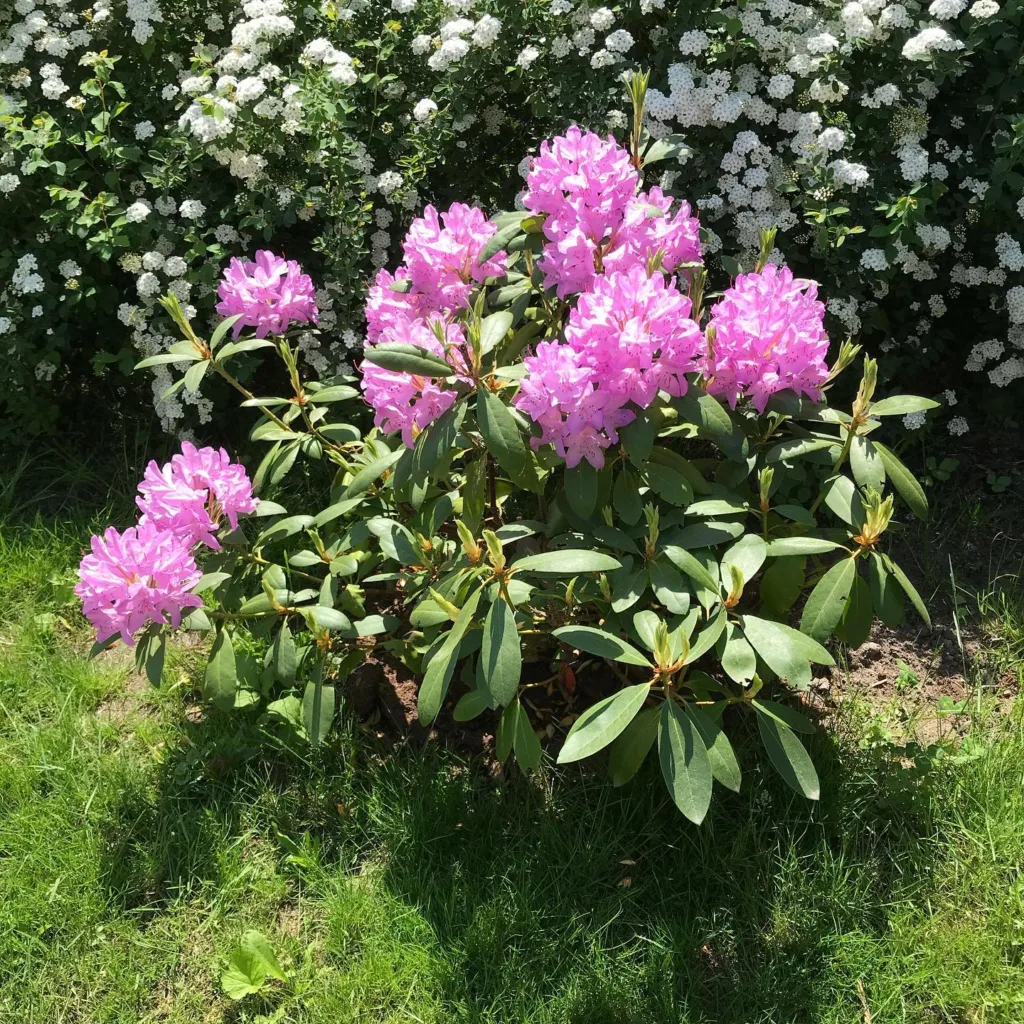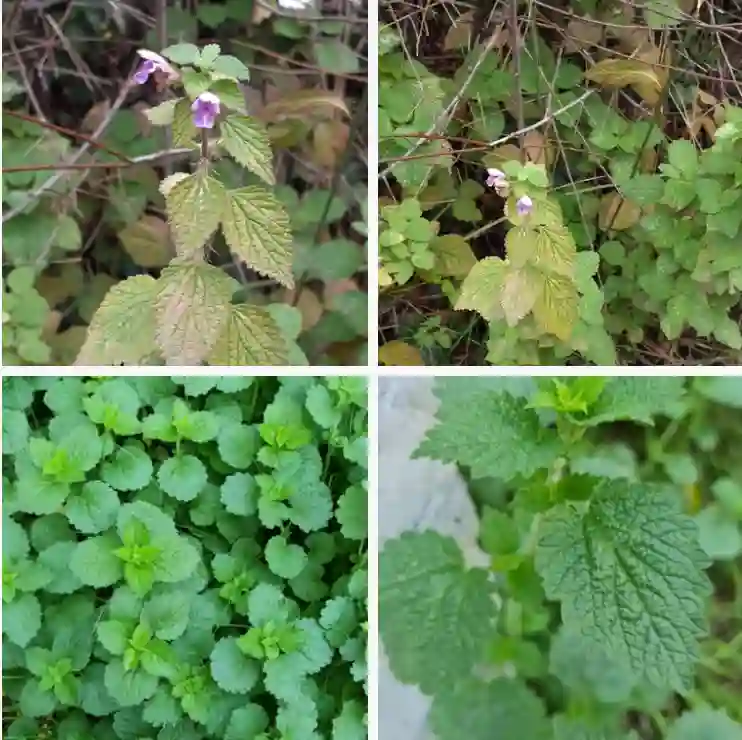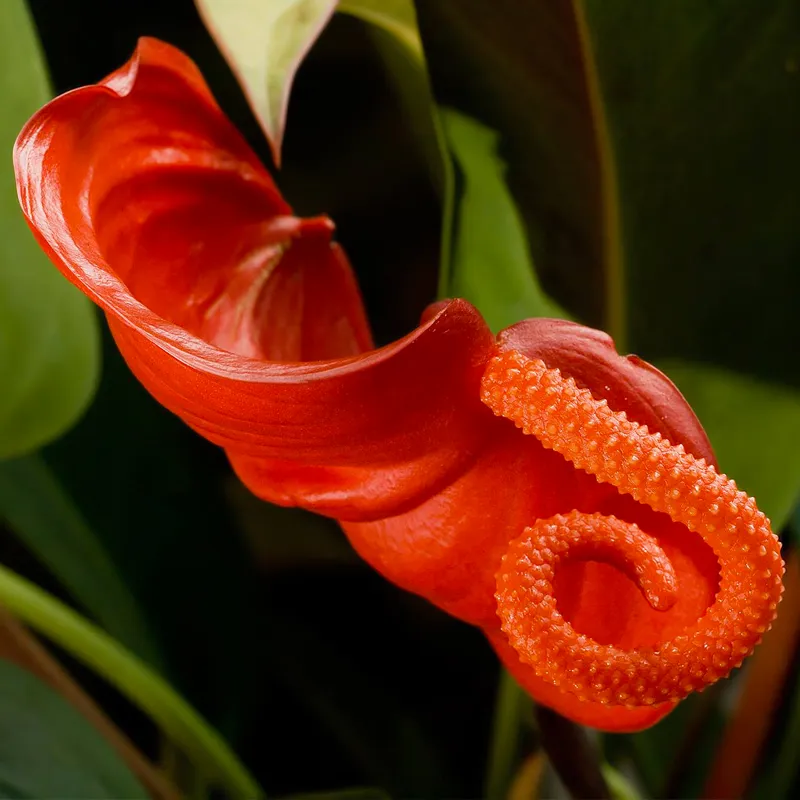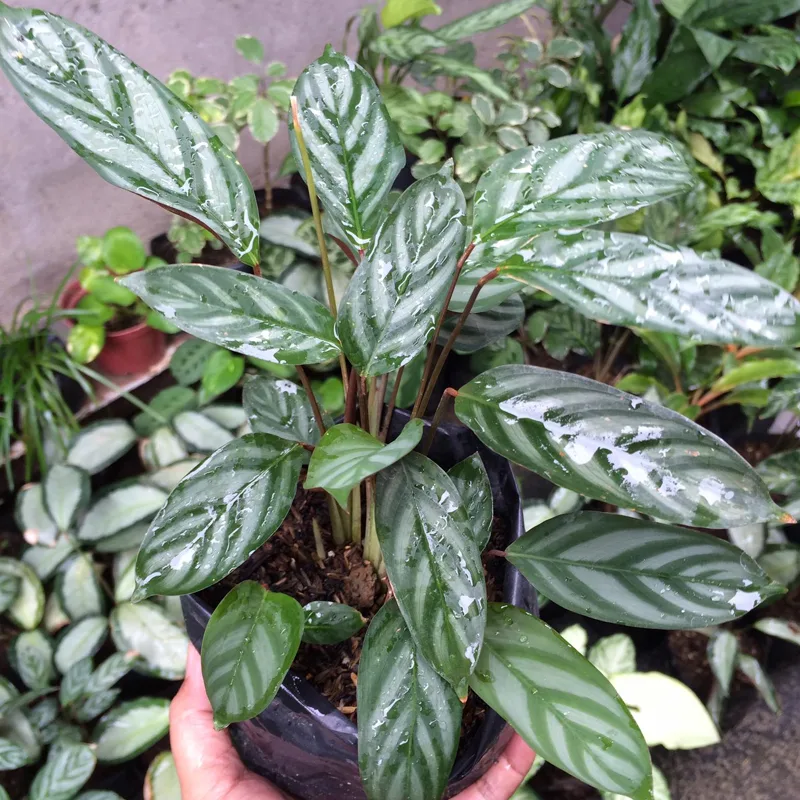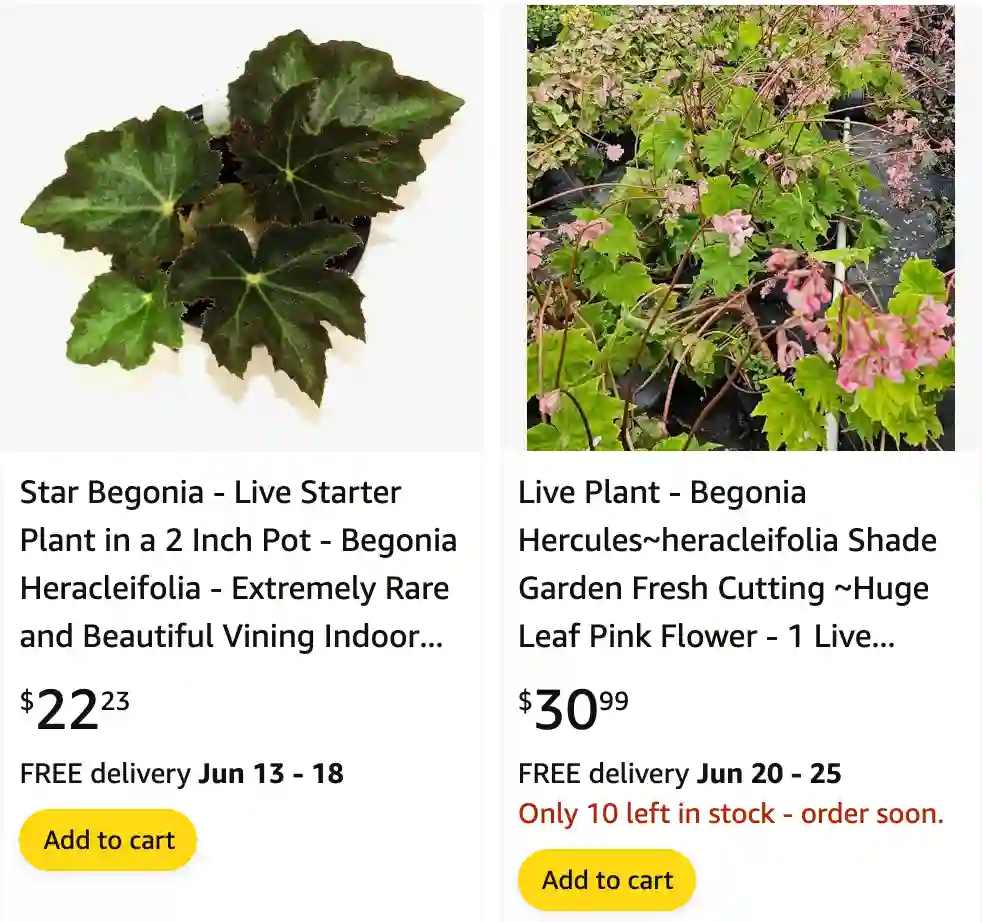
Among the vast and varied genus of Begonias, Begonia heracleifolia, commonly known as the Star Begonia, stands out as a true horticultural gem. Celebrated for its dramatic foliage and robust nature, this rhizomatous species offers a captivating display of natural artistry. Its large, palmate leaves, often adorned with intricate patterns and striking dark margins, evoke the image of a celestial starburst, making it a focal point in any plant collection.
This guide delves deep into the world of Begonia heracleifolia, providing an exhaustive look at its botanical characteristics, comprehensive care requirements, propagation methods, and common challenges. Beyond the factual exposition, we embark on a personal journey—a 5-year time lapse narrative from a dedicated gardener, offering insights into the unfolding life cycle of this remarkable plant, from a humble rhizome to a flourishing specimen.
Botanical Profile: The Enduring Allure of Begonia heracleifolia
To truly appreciate Begonia heracleifolia, understanding its botanical foundation is key. As a member of the diverse Begoniaceae family, this species belongs to a group of plants renowned for their ornamental value and fascinating adaptations.
Scientific Classification:
- Kingdom: Plantae
- Clade: Tracheophytes
- Clade: Angiosperms
- Clade: Eudicots
- Clade: Rosids
- Order: Cucurbitales
- Family: Begoniaceae
- Genus: Begonia
- Species: Begonia heracleifolia
- Binomial Name: Begonia heracleifolia Schltdl. & Cham.
Native Habitat and Distribution: Begonia heracleifolia is indigenous to the tropical and subtropical regions of Mexico and northern Central America. It thrives in the humid understories of forests, where it benefits from dappled light and consistent moisture, often growing as a terrestrial plant. Due to its ornamental appeal and adaptability, it has been introduced and naturalized in various other tropical locales, including parts of Cuba, Hispaniola, Puerto Rico, and Trinidad and Tobago. Its wide natural distribution suggests a species with considerable genetic and morphological variation, which manifests in the diverse leaf shapes and patterning observed across different forms. This inherent adaptability contributes to its success as a cultivated plant.
Physical Characteristics: The Star Begonia is primarily cultivated for its magnificent foliage, though its delicate flowers add an extra layer of charm.
- Leaves: The most striking feature of B. heracleifolia is its leaves. They are large, palmate (hand-shaped), and can span up to a foot (30 cm) or more in diameter when mature. The leaf surface is typically a vibrant green, but what makes them truly captivating are the dramatic dark markings that radiate from the center, often contrasting sharply with the lighter green. The margins are distinctly serrated, adding to their intricate appeal. The undersides of the leaves often exhibit a beautiful burgundy or reddish tint, and the petioles (leaf stalks) are typically pubescent (hairy) and may share this reddish coloration. Some forms exhibit a slightly succulent texture, allowing them to tolerate periods of less frequent watering.
- Rhizomes: As a rhizomatous begonia, B. heracleifolia grows from thick, fleshy, creeping rhizomes that spread along the soil surface. These rhizomes store water and nutrients, enabling the plant to endure less favorable conditions. In colder climates, where it might be grown outdoors, the foliage can die back in winter, but the plant will strongly recover in spring from these resilient underground structures, provided the rhizome remains dry and protected.
- Flowers: While the foliage takes center stage, Begonia heracleifolia produces charming, delicate flowers, typically pale pink to violet. These bloom in clusters on tall, upright stalks that emerge above the foliage, usually during the winter or spring months, adding a subtle beauty to the plant’s overall display.
Cultivation Guide: Nurturing Your Star Begonia
Successfully growing Begonia heracleifolia indoors or in suitable outdoor climates requires understanding its specific environmental preferences. By mimicking its native conditions, you can ensure a thriving and spectacular plant.
The Gardener’s Time Lapse: Year 1 – The Humble Rhizome
My journey with the Star Begonia began five years ago, not with a fancy mature plant, but with a simple, unassuming rhizome. It was a gift from a fellow plant enthusiast, just a small section with a couple of nodes and a tiny hint of green. I remember carefully preparing a shallow, wide pot, filled with a mix I hoped would replicate its tropical home: a blend of peat moss, perlite, and a bit of compost. I nestled the rhizome just barely beneath the surface, ensuring proper contact with the soil. The first few weeks were a test of patience. I kept the soil consistently moist but never soggy, and placed the pot in a spot that received bright, indirect light – a north-facing window, perfect for gentle mornings. Slowly, almost imperceptibly, a tiny green sprout emerged. Then another. Within a month, I had two small, beautifully unfurling leaves, each a miniature version of the characteristic star shape. It was a moment of pure joy, witnessing life emerge from what seemed like a dormant stick.
Light Requirements
Begonia heracleifolia thrives in bright, indirect light.
- Ideal Placement: A north- or east-facing window is often perfect, providing ample indirect light throughout the day. If placing near a west- or south-facing window, ensure the light is diffused by sheer curtains or an obstruction to prevent leaf scorching.
- Avoid Direct Sun: Harsh, direct sunlight, especially the intense afternoon sun, can burn the delicate leaves, leading to unsightly brown spots or a bleached appearance.
- Low Light Issues: Conversely, too little light can lead to leggy, spindly growth, where the plant stretches towards any available light source, resulting in sparse foliage and diminished vibrancy. If natural light is insufficient, a supplemental grow light (on for 8-12 hours a day) can provide the necessary illumination.
Temperature
Consistency in temperature is crucial for the Star Begonia.
- Optimal Range: The ideal temperature range for Begonia heracleifolia is between 65°F and 75°F (18°C to 24°C).
- Tolerated Range: While it can tolerate a wider range of 45°F to 95°F (7°C to 35°C), it’s best to avoid prolonged exposure to temperatures outside the optimal zone.
- Avoid Extremes: Protect the plant from sudden temperature fluctuations, cold drafts from windows or doors, and direct blasts from air conditioning vents or radiators, as these can stress the plant and cause leaf drop. The absolute minimum temperature it can handle is around 15°C (59°F), and above 30°C (86°F) can also be stressful.
Humidity
As a plant native to humid environments, Begonia heracleifolia appreciates high humidity.
- Ideal Levels: Aim for humidity levels between 60% and 80%.
- Increasing Humidity:
- Pebble Tray: Place the pot on a tray filled with pebbles and water, ensuring the bottom of the pot does not sit directly in the water (this can lead to root rot). As the water evaporates, it increases localized humidity.
- Humidifier: For drier climates, especially during winter months when indoor air tends to be dry, a room humidifier is highly beneficial.
- Grouping Plants: Grouping several plants together can also create a microclimate with slightly higher humidity.
- Misting Caution: While misting might seem like a good idea, avoid misting the leaves directly. This can promote fungal infections like powdery mildew, especially if air circulation is poor or if water droplets remain on the leaves for too long.
Watering
Proper watering is paramount to prevent common issues like root rot or dehydration.
- “When Dry” Method: Water thoroughly when the top inch (2.5 cm) of the soil feels dry to the touch. You can use your finger or a moisture meter to gauge this.
- Thorough Saturation: When watering, saturate the soil until water drains out from the bottom of the pot. This ensures that the entire root ball receives moisture.
- Drainage is Key: Always use a pot with drainage holes to prevent water from accumulating at the bottom, which leads to waterlogging and root rot. Empty any excess water from the saucer.
- Avoid Overwatering: Begonias are particularly susceptible to root rot if overwatered. Signs include yellowing leaves, a mushy stem base, or wilting.
- Reduce in Winter: During cooler months or periods of dormancy, the plant’s water needs decrease significantly. Adjust your watering frequency accordingly.
- Leaf Care: As mentioned, try to avoid getting water directly on the leaves, especially cold water, as it can cause brown spots or fungal issues. Water at the soil level.
Soil Preferences
A well-draining yet moisture-retentive potting mix is ideal for Begonia heracleifolia.
- Composition: A good mix should be loose, airy, and rich in organic matter. A popular blend consists of:
- Peat moss or coco coir (for moisture retention)
- Perlite or coarse sand (for drainage and aeration)
- Compost or worm castings (for organic matter and nutrients)
- pH Level: The Star Begonia prefers a slightly acidic to neutral soil pH, typically ranging from 5.5 to 7.0.
Fertilization
Begonia heracleifolia is a moderate feeder.
- Timing: Fertilize during its active growing season, which is typically spring and summer. Reduce or stop fertilization during cooler months or when the plant’s growth slows down.
- Type: Use a balanced, water-soluble fertilizer (e.g., 15-15-15 or 7-9-5).
- Strength: To prevent over-fertilization, dilute the fertilizer to a quarter to half strength of the manufacturer’s recommended dosage. Apply every two to four weeks.
- Application: Apply the fertilizer to moist soil to avoid root burn.
Propagation: Expanding Your Star Begonia Collection
One of the rewarding aspects of growing Begonia heracleifolia is its ease of propagation, allowing you to create more plants to share or expand your collection.
The Gardener’s Time Lapse: Year 2 – Spreading Its Wings (and Rhizomes!)
By the second year, my Star Begonia was no longer a humble sprout. Its rhizomes had begun to creep gracefully across the soil surface, and the leaves had grown considerably, their dark patterns becoming more defined and dramatic. I decided it was time for its first repotting, moving it into a slightly larger, wider terracotta pot to accommodate its spreading nature and help with drainage. This year brought my first encounter with a common begonia challenge: a slightly leggy stem due to a period of less-than-ideal light during a cloudy stretch. A quick pinch of the growing tip, as recommended, encouraged it to branch out, and soon, new, bushier growth emerged. Towards the end of winter, a delightful surprise: delicate pale pink flower stalks began to rise above the foliage. They weren’t as showy as the leaves, but their subtle beauty was undeniable. I even decided to try propagating from a leaf cutting, a small experiment that gave me a handful of tiny new plantlets by the end of the year, ready to be gifted or to start new, lush pots.
1. Leaf Cuttings
Propagating from leaf cuttings is a popular and effective method for rhizomatous begonias.
- Selection: Choose a healthy, mature leaf from the parent plant.
- Preparation: Cut the leaf, leaving about an inch of the petiole (leaf stem). Then, flip the leaf over and make several small cuts (about 1/2 inch) across the main veins on the underside of the leaf. These are the points where new plantlets will emerge.
- Planting: Lay the prepared leaf flat on the surface of a moist, well-draining seed-starting mix (like a mix of peat and perlite). Gently pin the leaf down with bent paperclips or small stones to ensure good contact between the cut veins and the soil.
- Environment: Cover the tray or pot with a clear plastic dome or plastic wrap to create a humid environment. Ensure the plastic doesn’t touch the leaves to prevent fungal issues.
- Care: Place in a warm (around 70°F or 21°C), brightly lit spot, out of direct sunlight. Keep the soil consistently moist but not waterlogged.
- Results: In about 6 to 8 weeks, tiny plantlets with their own roots and leaves will begin to form at the cut points on the veins. Once they are large enough to handle, you can carefully separate and pot them individually.
2. Rhizome Division
This method is ideal for mature, established plants and can help rejuvenate an overgrown specimen.
- Timing: The best time for rhizome division is during spring when the plant is actively beginning its new growth cycle.
- Process: Carefully remove the plant from its pot. Gently shake off excess soil to expose the rhizomes. Using a clean, sharp knife or sterile pruners, cut the rhizomes into sections, ensuring each section has at least one healthy growing point (a leaf or a bud) and some roots attached.
- Replanting: Plant each rhizome section in its own pot filled with fresh, well-draining potting mix, burying the rhizome just beneath or at the soil surface.
- Care: Water lightly and place in a warm, humid environment with indirect light until new growth appears, indicating successful establishment.
3. Stem Cuttings
While less common for B. heracleifolia than leaf or rhizome propagation due to its rhizomatous growth habit, stem cuttings can still be successful.
- Selection: Take a healthy stem cutting, ensuring it has at least one or two nodes. Make the cut just below a node.
- Rooting: The cutting can be rooted in water (change water every few days) or directly in a moist, well-draining potting mix.
- Environment: Provide warmth and high humidity, similar to leaf cuttings, until roots develop.
Common Issues and Solutions: Keeping Your Star Begonia Thriving
Even with the best care, Begonia heracleifolia can occasionally encounter problems. Early detection and prompt action are key to maintaining a healthy plant.
The Gardener’s Time Lapse: Year 3 – A Lush Canopy
By its third year, my Star Begonia was a sight to behold. Its sprawling rhizomes had produced a dense, lush canopy of those magnificent star-shaped leaves, each reaching its full potential in size and vibrant patterning. It had become a true statement piece in my collection. Regular pruning of older, yellowing leaves and an occasional snip of an overly enthusiastic rhizome kept its shape tidy and encouraged even more vigorous growth. I had refined my watering routine, now almost instinctively knowing when the top inch of soil had dried out, and the pebble tray beneath its pot was a constant companion, ensuring consistent humidity. It flowered reliably each winter, its delicate pink blooms a beautiful counterpoint to the bold foliage. This year was about maintenance, allowing the plant to truly flourish without major setbacks.
Pests
While begonias possess some natural resistance due to oxalic acid, they can still fall victim to common houseplant pests.
- Common Pests: Mealybugs, spider mites, aphids, scale, whiteflies, nematodes, and slugs/snails (if outdoors).
- Symptoms: Sticky residue (honeydew), webbing (spider mites), visible insects, distorted growth, yellowing leaves.
- Solutions:
- Isolation: Isolate infested plants immediately to prevent spread.
- Manual Removal: For small infestations, wipe off pests with a cotton swab dipped in rubbing alcohol or strong stream of water.
- Insecticidal Soap/Neem Oil: Apply an insecticidal soap or neem oil spray according to product instructions. Repeat applications may be necessary.
- Prevention: Regularly inspect your plant, especially the undersides of leaves and in leaf axils. Good air circulation also helps.
Diseases
Fungal and bacterial diseases are often linked to improper watering, humidity, or air circulation.
- Common Diseases: Bacterial leaf spot, powdery mildew, botrytis (gray mold), Pythium root rot, and Rhizoctonia crown rot.
- Symptoms:
- Leaf Spots: Circular or irregular spots (yellow, brown, black) on leaves.
- Powdery Mildew: White, powdery patches on leaves and stems.
- Botrytis: Fuzzy gray mold, often on decaying plant material.
- Root/Crown Rot: Yellowing, wilting, mushy stem/roots, plant collapse.
- Solutions:
- Prevention is Key:
- Avoid overwatering.
- Ensure excellent drainage.
- Provide good air circulation (don’t overcrowd plants).
- Avoid misting leaves, especially in low light or cool conditions.
- Use clean, sterile tools when pruning or propagating.
- Treatment: Remove and discard affected plant parts. For fungal issues, apply a fungicide suitable for begonias (ensure it’s safe for use on ornamental plants). For severe root rot, repotting into fresh, dry soil after trimming affected roots may be necessary, but recovery is often difficult.
- Prevention is Key:
Physiological Problems (Non-Pest/Disease)
These issues are often indicators of environmental stress or incorrect care.
- Yellowing Leaves:
- Cause: Most commonly, overwatering (leading to root suffocation) or underwatering. Also, nutrient deficiency (especially nitrogen) or sudden environmental changes (temperature, drafts).
- Solution: Adjust watering schedule. Check soil moisture. Consider a balanced fertilizer if nutrient deficiency is suspected. Maintain stable environmental conditions.
- Wilting or Drooping Leaves:
- Cause: Underwatering (plant lacks turgor) or, paradoxically, severe overwatering (roots are suffocated and cannot absorb water). Pest damage can also cause this.
- Solution: Check soil moisture. If dry, water thoroughly. If soggy, allow to dry out or consider repotting. Inspect for pests.
- Brown Tips and Edges of Leaves:
- Cause: Low humidity or underwatering.
- Solution: Increase humidity (pebble tray, humidifier). Adjust watering frequency.
- Leggy Growth:
- Cause: Insufficient light, causing the plant to stretch for light sources.
- Solution: Move to a brighter location with indirect light. Prune back leggy stems to encourage bushier growth.
- Leaf Drop:
- Cause: Often a response to environmental stress, particularly sudden changes in temperature, light, or watering. Can also indicate severe overwatering or root rot.
- Solution: Identify and rectify the environmental stressor. Ensure proper watering and drainage.
Pruning
Regular pruning helps maintain the plant’s shape, encourages bushier growth, and removes unsightly or unhealthy foliage.
- Pinching: Pinch off the tips of young stems to encourage branching and a more compact, fuller plant.
- Removing Damaged Leaves: Promptly remove any yellowing, brown, or otherwise damaged leaves to divert energy to healthy growth and improve air circulation.
- Rhizome Control: On older, sprawling plants, you can trim back portions of the rhizome to control size or encourage a denser center. Ensure cuts are made with clean, sharp tools.
Repotting
Begonia heracleifolia benefits from repotting every 2-3 years, ideally in the spring.
- Signs of Needing Repotting: Roots circling the pot, water draining very quickly, stunted growth, or the rhizomes becoming overly crowded.
- Pot Size: Choose a pot that is only slightly larger (1-2 inches wider) than the current one, as begonias prefer to be somewhat root-bound. A shallow, wide pot is often preferred to accommodate their spreading rhizomatous growth habit.
- Process: Gently remove the plant, inspect roots, trim any dead or circling roots, and repot with fresh, well-draining potting mix. Water moderately after repotting to help the plant settle.
Varieties and Relatives: The Diverse Begonia Family
The genus Begonia is incredibly diverse, encompassing over 1,500 species and countless hybrids, categorized by their root structure (fibrous, tuberous, rhizomatous) and growth habits. Begonia heracleifolia belongs to the rhizomatous group, known for their stunning foliage and creeping stems.
While Begonia heracleifolia itself exhibits natural variations in leaf patterning, some named cultivars exist, such as Begonia heracleifolia ‘Nigricans’, which is known for its particularly dark, almost black, leaf margins and venation. This highlights the plant’s inherent variability, making each specimen uniquely beautiful.
Begonia Heracleifolia vs. Begonia Masoniana (Iron Cross Begonia)
The original article touched upon the comparison between Begonia heracleifolia and Begonia masoniana, often called the Iron Cross Begonia. Both are rhizomatous begonias prized for their striking foliage, but they have distinct differences:
| Feature | Begonia heracleifolia (Star Begonia) | Begonia masoniana (Iron Cross Begonia) |
|---|---|---|
| Native Origin | Mexico and Central America | Guangxi, China |
| Leaf Shape | Distinctly palmate (hand-shaped), often deeply lobed, star-like. | Ovate to heart-shaped. |
| Leaf Texture | Slightly succulent, generally smoother or finely pubescent on top. | Hard to the touch, very rough, covered with prominent red trichomes (hairs). |
| Leaf Color/Pattern | Vibrant green background with dramatic, often dark, star-shaped patterns radiating from the center. Burgundy or reddish undersides. Often has distinct dark margins. | Intense green background with a characteristic dark, almost black, cross-shaped pattern in the center (resembling an Iron Cross). This pattern starts red when leaves are young. Does not typically have black-edged leaf borders. |
| Leaf Size | Can reach up to 1 foot (30 cm) or more in diameter. | Can reach up to 10 inches (25 cm) in length. |
| Overall Appearance | More open, airy, star-like leaf display. | Denser, more textured leaf display with the prominent central cross. |
While both are captivating rhizomatous begonias, their unique leaf characteristics make them easily distinguishable and equally desirable additions to a foliage plant collection.
Toxicity: A Note of Caution
Like many ornamental plants, Begonia heracleifolia contains compounds that can be toxic if ingested.
- Toxic Compounds: Begonias contain soluble calcium oxalate crystals. These needle-shaped crystals can cause irritation upon contact or ingestion.
- Concentration: The highest concentration of these toxic compounds is found in the underground parts of the plant, particularly the rhizomes/tubers.
- Symptoms of Ingestion (Humans & Pets):
- Immediate: Intense burning and irritation of the mouth, throat, lips, and tongue.
- Other Symptoms: Excessive drooling, choking, difficulty swallowing (dysphagia), vomiting, and diarrhea. These symptoms can persist for up to two weeks.
- Severe Cases (Rare): In very large quantities, especially of the rhizomes, ingestion can lead to kidney failure, coma, or even death in pets. However, severe cases are rare because the immediate burning sensation often deters further consumption.
- Skin Irritation: The sap of the plant can also cause skin irritation in sensitive individuals.
- Precaution: It is advisable to wear gloves when handling Begonia heracleifolia, especially when pruning or repotting, and keep it out of reach of curious children and pets. If ingestion is suspected, seek immediate medical or veterinary attention.
The Gardener’s Time Lapse: Year 4 – Resilience and Renewal
The fourth year presented a significant test: a particularly harsh winter that dropped indoor humidity levels lower than usual. My Star Begonia, though robust, showed some signs of stress – a few crispy leaf edges and a slight slowdown in growth. It reminded me that even resilient plants have their limits. I invested in a small humidifier, and the plant quickly rebounded. This year also highlighted its incredible resilience. While many of its older, larger leaves naturally yellowed and dropped as winter deepened, the stout rhizomes remained vibrant beneath the soil. Come spring, with increased warmth and light, it burst forth with an explosion of new growth, proving its perennial strength. I even had to divide a particularly large section of the rhizome to prevent overcrowding, sharing the bounty with another eager gardener. It was a testament to the plant’s ability to renew itself, a mini-rebirth each year.
The Gardener’s Time Lapse: Year 5 – A True Star in the Collection
Five years have passed since that humble rhizome arrived. Today, my Begonia heracleifolia is not just a plant; it’s a living monument to patience, observation, and the simple joys of gardening. It’s a true star in my indoor jungle, its sprawling form and intricate leaves commanding attention. Its care has become almost intuitive, a rhythmic dance of watering, occasional feeding, and appreciative glances. It has weathered minor challenges, adapted to seasonal shifts, and consistently offered its unique beauty. It’s a reminder that sometimes, the most dramatic beauty comes from the most steadfast and enduring forms, unfolding its story, leaf by leaf, season after season, in a timeless display.
Conclusion: The Enduring Charm of the Star Begonia
Begonia heracleifolia, the Star Begonia, is far more than just another houseplant. It is a striking botanical specimen that offers immense visual appeal with its uniquely patterned, palmate foliage. Its relatively straightforward care, coupled with its robust rhizomatous nature, makes it a rewarding choice for both novice and experienced plant enthusiasts. From its humble beginnings as a rhizome to its mature, star-like splendor, this plant promises an unfolding journey of growth and beauty. By providing the optimal conditions outlined in this guide—bright, indirect light, consistent moisture, high humidity, and a well-draining soil—you too can cultivate a thriving Begonia heracleifolia and enjoy its enduring charm for many years to come.
If i die, water my plants!
